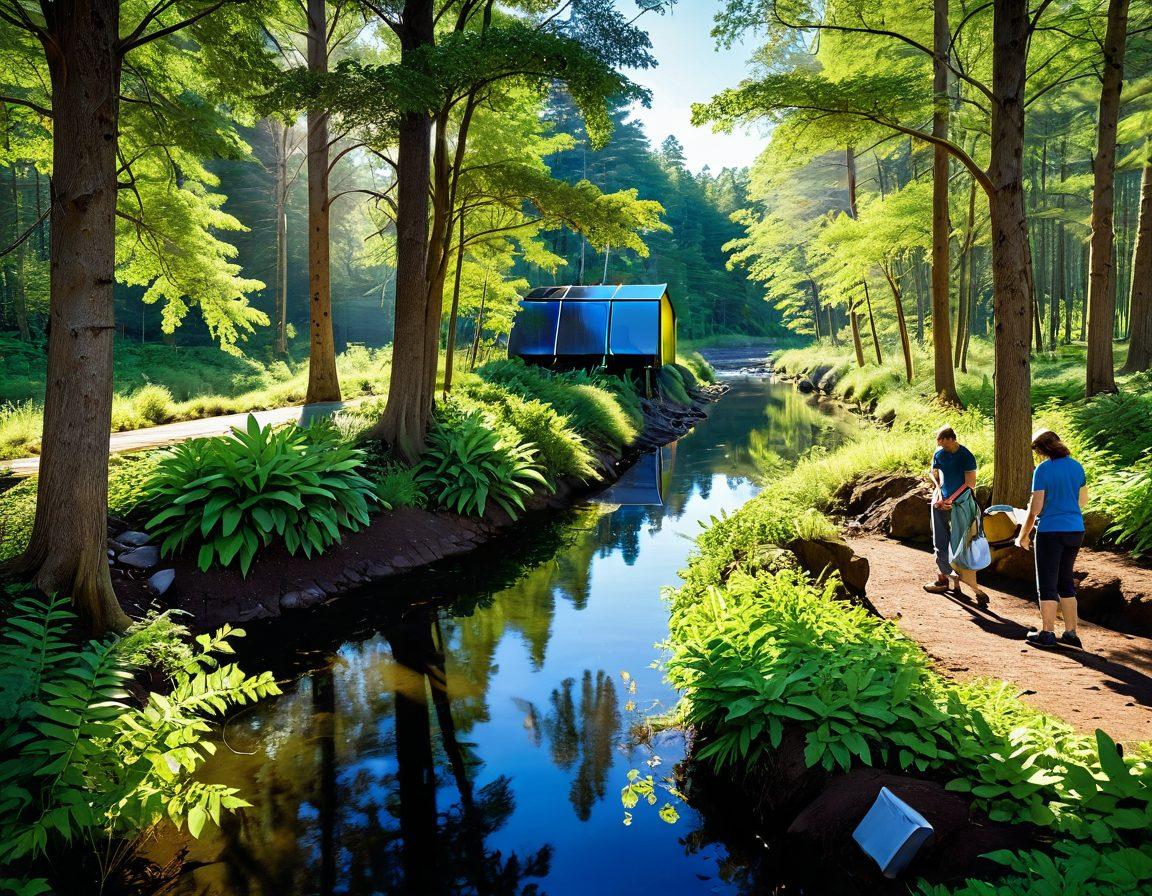Cultivating a Greener Future: Sustainable Practices in Forest Management and Conservation
In an era marked by climate change and environmental challenges, the way we approach forest management is more crucial than ever. Picture this: vast stretches of lush landscapes, vibrant flora and fauna coexisting harmoniously. This is not just a dream; it's a vision that can become a reality if we embrace eco-friendly techniques in our forest management practices. As we delve into the future of forestry, we will explore how sustainable practices can not only protect our natural resources but nurture them for generations to come.
What if, instead of simply managing forests for timber, we started viewing them as living ecosystems that require nurturing and respect? Embracing sustainability in forest management means acknowledging the intricate web of life that thrives within these woodlands. Through tree planting and reforestation, we can enhance biodiversity and restore habitats that support vital wildlife populations. Imagine walking through a forest where every tree has a story and every creature plays a part in a thriving ecological narrative. It’s achievable if we prioritize forest conservation and eco-friendly practices.
Sustainable practices are not just a buzzword; they are essential components of effective land management. From agroforestry systems that integrate crops with tree planting to urban forestry initiatives that infuse cities with greenery, these innovative strategies not only improve forest health but also reduce our carbon footprint. The benefits are twofold: while we are protecting our environment, we are also creating spaces that enhance our quality of life. With initiatives like these, the future of forest management can be profoundly impactful and transformative.
It can be easy to feel lost in the vastness of the environmental crisis, but small, actionable steps can make a significant difference. Have you ever thought about how you can contribute to wildlife conservation within your local community? Supporting local reforestation projects, engaging in habitat restoration efforts, or volunteering for organizations focused on ecological resilience such as MyForester can provide tangible impacts. Every little effort counts and when combined with other eco-friendly initiatives, it leads to profound change.
As we forge ahead, it’s important to remember that effective forest policy and land stewardship are foundational to achieving sustainable outcomes. The role of policymakers, communities, and individuals is intertwined in shaping a greener tomorrow. By advocating for practices that support environmental preservation and wildlife protection, we can foster a culture of sustainability. Once we understand that our work today directly influences forest ecosystems, we can create a legacy that celebrates nature and cherishes biodiversity for all future generations.
Reforestation and Beyond: Innovations in Sustainable Practices
Imagine standing in a vibrant forest filled with life, diversity, and resilience. The gentle rustling of leaves and the sweet scent of earth awaken a deep connection to nature that stitches us all together. As we navigate the complexities of climate change and ecological decline, reforestation emerges as a beacon of hope in sustainable practices. The innovative strategies within forestry aren’t merely about planting trees; they encompass an entire ecosystem of actions that promote not only environmental preservation but also biodiversity and habitat protection. In this blog, we’ll explore how initiatives like those offered by myforester are driving forward the movement for a greener future.
Reforestation is an action most of us can visualize: planting a young tree into the soil. But it is much more than that; it is an intricate process that requires thoughtful planning and execution. As we delve deeper into the concept of sustainable practices in forest management and conservation, we see how innovative methods such as agroforestry and urban forestry can be used to balance human needs with ecological health. How can we harness the power of nature’s own systems to improve our environmental footprint and promote better land stewardship?
The magic of reforestation lies in its ability to restore ecosystems that have been disrupted. By focusing on holistic ecosystem management, we not only plant trees but also bring back the flora and fauna that depend on those trees for habitat and food. When we think of wildlife protection, we often picture vast swathes of dense forest; however, urban areas can also serve as key players in this narrative. Urban forestry initiatives revitalize our cities by integrating trees into our infrastructure, heightening local biodiversity and improving air quality. Have you ever stopped to think how a single tree can cool an entire block?
In the era of climate change, embracing reforestation goes hand-in-hand with reducing our carbon footprint. Every tree planted is a step toward carbon sequestration, capturing and storing carbon dioxide from the atmosphere. Organizations like myforester are pioneering this movement by developing technologies that allow land management practices to be tracked and optimized. These eco-friendly innovations not only bolster forest health, they also provide a framework for engaging communities in forest conservation efforts. How can we all contribute to this global task of conservation?
As forests continue to face threats from commercial activities and climate change, it is vital that we engage in actionable practices for habitat restoration and environmental preservation. The future of our planet rests on our ability to innovate and adapt, ensuring the sustainable management of our natural resources. By advocating for forest policy reform and supporting wildlife conservation initiatives, we help forge a path toward a brighter, greener future. As stewards of our environment, let’s plant the seeds of hope today for the forests of tomorrow.
Biodiversity Boost: Protecting Wildlife through Effective Conservation Strategies
As the sun dips below the horizon, painting the sky in shades of purple and orange, one cannot help but marvel at the biodiversity flourishing around us. Just think about it—every woodland, every stream teeming with life, is an ecosystem meticulously crafted by the delicate balance between nature and wildlife. That's not just a poetic notion; it's a reminder that our forests are essential to the environment and forestry practices must evolve to ensure their health and sustainability. As custodians of these natural resources, it's our duty to explore effective conservation strategies that protect wildlife and promote a greener future.
At the heart of wildlife protection lies sustainable practices geared towards conservation. Imagine a world where tree planting initiatives not only replenish our forests but also create habitats for countless species, turning barren lands into flourishing ecosystems. The idea that every tree planted contributes to biodiversity and serves as a sanctuary for wildlife is a compelling narrative for conservation. It begs the question: How can we, as individuals and communities, innovate our approaches to wildlife conservation while promoting forestry as a foundation for sustainability?
One effective conservation strategy is land stewardship, the practice of managing land according to ecological principles. Land management becomes a community-driven effort, with local inhabitants playing active roles in decision-making processes. By engaging in habitat restoration projects, communities can transform degraded environments into thriving ecosystems. This synergy between social responsibility and environmental health creates a model for successful urban forestry initiatives, allowing urban areas to expand their green spaces while enhancing biodiversity.
Moreover, the significance of reforestation and agroforestry cannot be overstated in our quest for biodiversity boost. These eco-friendly techniques not only improve forest health but also benefit local wildlife by providing necessary habitats. Have you ever thought about the impact of your daily choices on wildlife protection? Whether it’s choosing sustainable products or supporting green initiatives, each small action contributes to the greater goal of environmental preservation. Encouraging businesses and local governments to adopt wildlife conservation policies can lead to significant changes that foster ecological awareness and responsibility.
In conclusion, the dialogue around forest conservation and wildlife protection is expansive, compelling, and urgent. We must weave together the threads of ecology, land management, and community involvement to create a tapestry of success in conservation strategies. Remember, empowered individuals fuel the engines of change. By asking ourselves how we can contribute—from advocating for tree planting to participating in local wildlife protection programs—we begin writing our own stories of sustainable practices. Let’s embark together on this journey, ensuring that future generations will inherit a world rich in biodiversity and alive with color and life.


